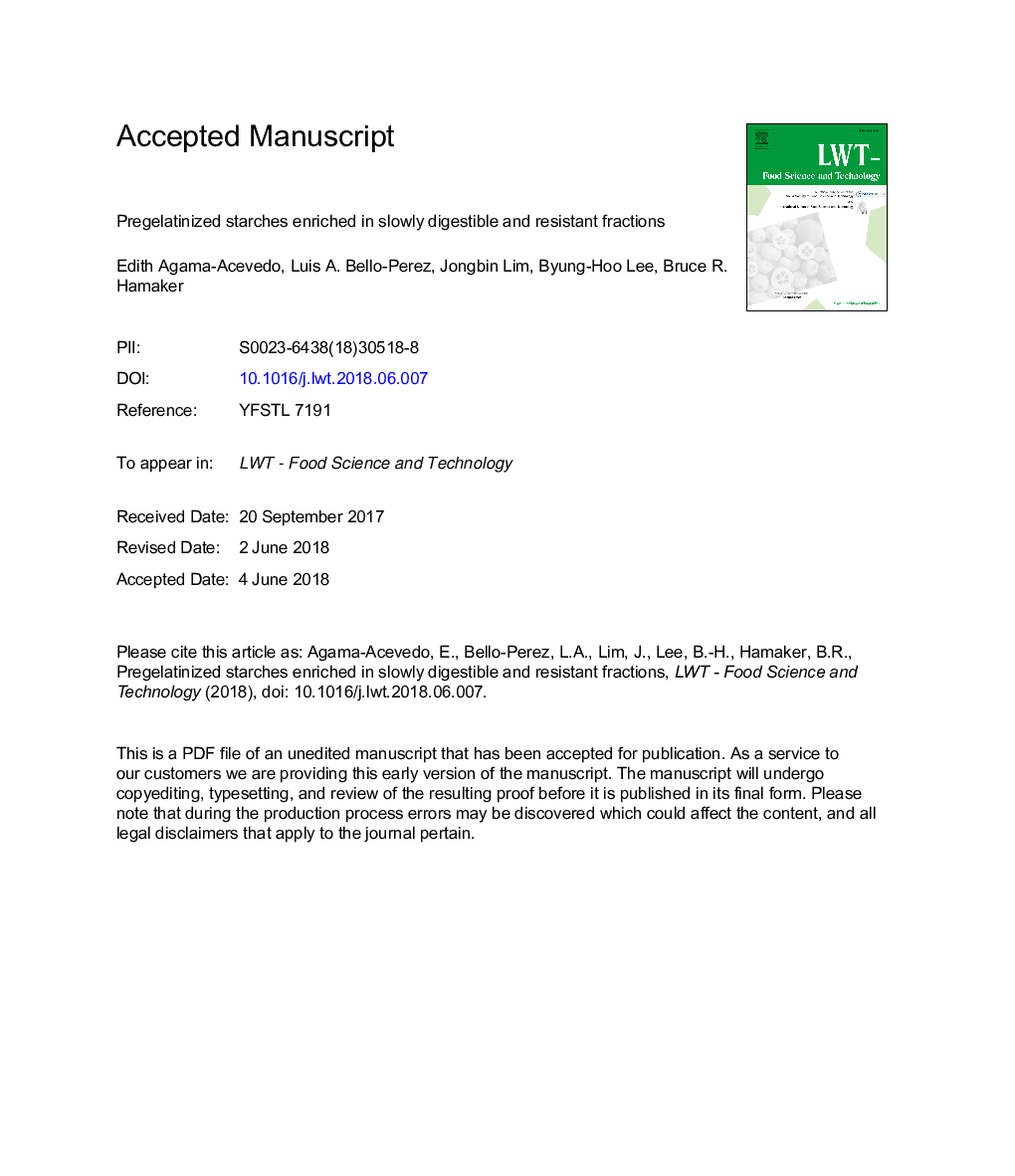| Article ID | Journal | Published Year | Pages | File Type |
|---|---|---|---|---|
| 8890098 | LWT - Food Science and Technology | 2018 | 24 Pages |
Abstract
Consumption of slowly digestible and resistant starches (SDS and RS) is known to modulate postprandial glucose levels and attain extended glucose release. In this study, pregelatinized high-amylose maize starches (50 and 70â¯g amylose 100â¯gâ1 starch) were subjected to hydrothermal treatments [40â¯g water 100â¯gâ1, heat-moisture treated (HMT) at 100â¯Â°C and low temperature-moisture treated (LMT) at 4â¯Â°C] to increase total amount of SDS and RS. Hydrothermal treatment of pregelatinized high-amylose starches produced higher amounts of SDS (27.0 and 26.4% for HMT and LMT amylomaize V, and 21.5 and 21.6% for HMT and LMT amylomaize VII) and RS (36.2 and 31.5â¯g/100â¯g, and 47.5 and 37.5â¯g/100â¯g, respectively), than pregelatinized normal or waxy starches (SDS - 2.3 and 3.2â¯g/100â¯g, and 13.7 and 15.8â¯g/100â¯g, respectively; and RS 10.2 and 7.8â¯g/100â¯g, and 12.4 and 11.0â¯g/100â¯g, respectively). Granule morphology was retained in pregelatinized high-amylose starches, apparently due to their restricted swelling. Starch debranching profiles showed a minor increase in DP 25-36 in SDS and RS, suggesting that higher intermediate fractions of the high-amylose starches may create an overall material effect resulting in slower digestion of hydrothermal treated starches. High SDS and RS in pregelatinized starches could be applied in cold-formed food products.
Related Topics
Life Sciences
Agricultural and Biological Sciences
Food Science
Authors
Edith Agama-Acevedo, Luis A. Bello-Perez, Jongbin Lim, Byung-Hoo Lee, Bruce R. Hamaker,
